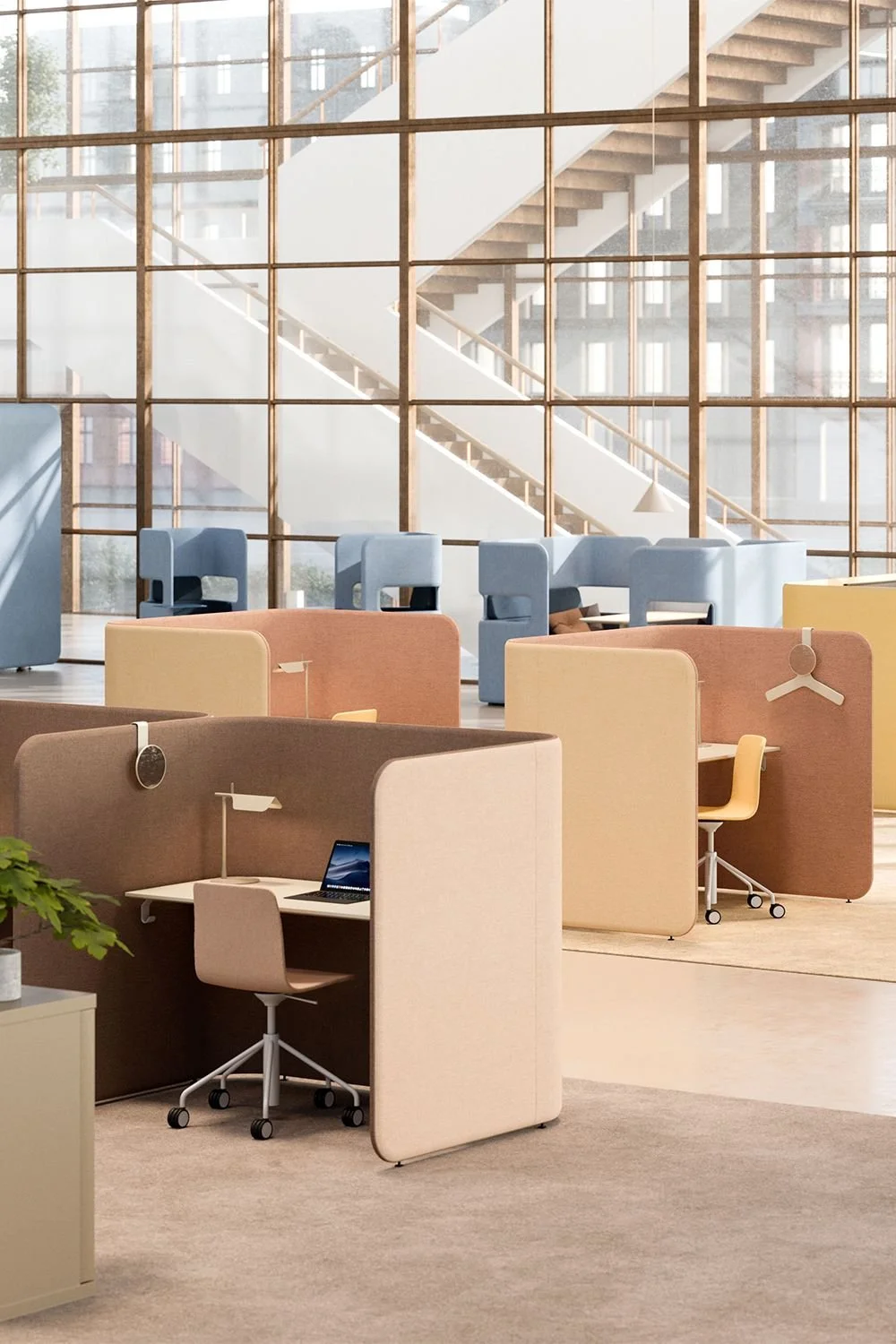Sound Matters
When you walk into a well-designed office, you likely notice the light, the colours, the layout. But what about the sound?
While it’s invisible, sound can make or break a workplace. Whether it’s the clatter of a keyboard, a colleague’s call across the room, or the hum of HVAC systems – noise is everywhere. And the consequences of not managing it? Burnout, frustration, and lost productivity.
The Unseen Impact of Noise at Work
A growing body of research shows that workplace noise doesn’t just irritate, it actively undermines employee well-being and performance.
71% of employees say noise has a negative impact on their productivity.
(Leesman Index, 2022)Workers exposed to open-plan noise experience 66% more errors in data entry tasks.
(Banbury & Berry, 2005)Constant background noise can raise cortisol levels (the body’s stress hormone), leading to anxiety, fatigue, and impaired memory.
(Jahncke et al., 2011)According to the World Health Organization, excessive workplace noise can contribute to cardiovascular disease and sleep disturbance.
In a 2021 survey, 70% of employees reported that noise negatively impacts their ability to work.
The constant barrage of auditory distractions in open offices has even been linked to higher rates of burnout. In short: if your office is too loud, your team is likely distracted, stressed, and underperforming.
Sound is one of the most pervasive and impactful environmental factors affecting how people feel, focus, and function in their work environments. In an open-plan world where distraction can even be a dropped pen or a loud phone call away, it’s important to design with sound in mind and to consider it early.
In the WELL Building Standard, one of the dedicated concepts is SOUND, promoting spaces that mitigate noise, support speech privacy, and enhance acoustic comfort to improve mental and physical wellbeing.
5 Design Strategies to Improve Workplace Acoustics
Regardless of the size or set up of your workplace, you can still start designing for sound. These 5 strategies can get you started:
1. Zone Your Space
Separate areas for focused work, collaboration, and social interaction. Use furniture and partitions to create sound buffers.
2. Absorb and Soften
Use materials like acoustic wall panels, ceiling baffles, and carpet tiles to absorb sound rather than reflect it. Soft furnishings are in, and hard, reflective surfaces are out!
3. Mask with Purpose
Sound masking systems emit low-level ambient noise to reduce distraction and improve speech privacy.
4. Reduce Machine Noise
Ensure mechanical systems meet low noise thresholds, and take a look at what else is contributing to your work soundscape.
5. Design for Privacy
Include acoustic booths and meeting pods so sensitive conversations don’t travel across the floor.
Creating a Sound-Healthy Office: Case Example
A standout example of good acoustic design is the SEEK Global Headquarters in Cremorne, Melbourne.
Architects: Hassell
Acoustic Engineers: Arup
Builder: Built
Acoustic Solution: 15,000 m² of Autex Acoustics' Quietspace® Panels
This WELL-focused workplace accommodates over 1,500 people across open-plan areas, a massive 1000-seat town hall, and a central atrium. The design team used extensive acoustic treatments to mitigate the effects of reverberation and speech interference which key challenges in such large, open spaces.
The result? A bustling, collaborative environment that supports both focus and flexibility, where employee complaints about noise have significantly decreased. In fact, post-occupancy evaluations showed a 35% improvement in reported concentration levels and a 22% drop in perceived stress related to noise.
Balance Is Golden
We’re not aiming for silence. In fact, too much quiet can be just as uncomfortable as too much noise. The goal is sound balance - spaces that support focus without isolating, and collaboration without chaos.
Designing with sound in mind is more than a performance issue. It’s a signal that people’s wellbeing matters. And as the WELL Sound concept makes clear: healthy sound equals healthy work.
Read More
Banbury, S. P., & Berry, D. C. (2005). Office noise and employee concentration: Identifying causes of disruption and potential improvements.
Evans, G. W., & Johnson, D. (2000). Stress and open-office noise.
Jahncke, H., Hygge, S., Halin, N., Green, A. M., & Dimberg, K. (2011). Open-plan office noise: Cognitive performance and restoration.
Leesman Index, 2022 Workplace Effectiveness Survey
WELL Building Standard v2 – Sound Concept: https://www.wellcertified.com
Autex Acoustics SEEK HQ Case Study: architectureanddesign.com.au
Images from Top
Blue Fin Building, Fora
Superlimão
PodWord by Martella



